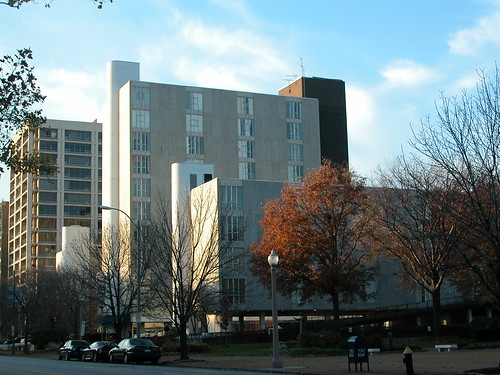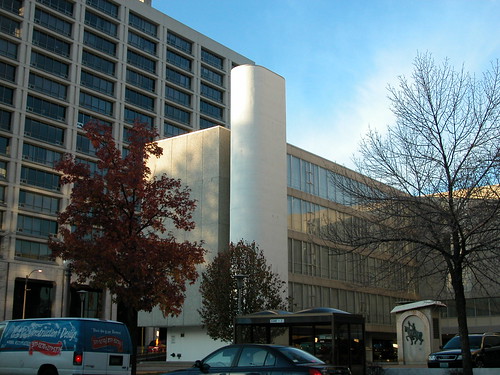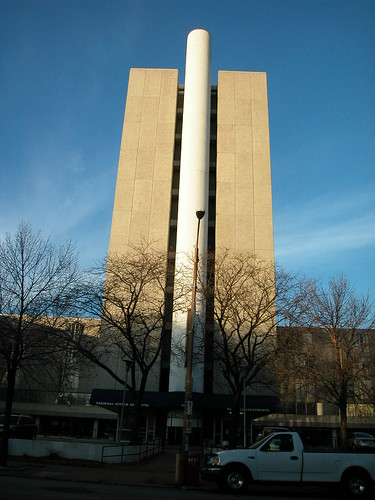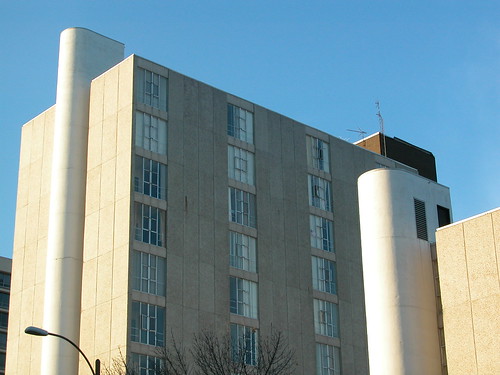by Michael R. Allen
Here is the building now known as the San Luis Apartments, located at 4483 Lindell Boulevard in the Central West End. Just west of the Cathedral, the building is owned by the Archdiocese of St. Louis and used as apartments for the elderly. The Archdiocese plans to demolish the building in February for a surface parking lot despite no pressing problem with the apartments, which are generally loved by residents for their excellent location. Residents are being relocated to many different places, none of which is as transit accessible — an important criterion for older people who do not drive.
The news of the Archdiocese’s plan surprises many Central West End residents who are aghast at the idea of creating a surface parking lot facing well-traveled Lindell on the same block as the elegant Cathedral. Many are astounded that the Archdiocese would proceed to demolition without any plan for future development of the site, leaving a gaping hole for an indefinite period. The Central West End Association and Alderwoman Lyda Krewson (D-28th) have yet to make official statements on the proposed demolition. However, oppositional voices are stating to cry out. Last week, the West End Word ran a letter to the editor from STL Style‘s Randy Vines.
Real estate moguls Harold and Melvin Dubinsky working with Paul Kapelow took out a building permit for a motor hotel on September 25, 1961, with construction estimated at $2.75 million. New Orleans firm Colbert, Lowery, Hess & Bouderaux designed the curvilinear, E-shaped modernist hotel. On July 3, 1963 the hotel building was granted an occupancy permit and shortly afterward opened as the DeVille Motor Hotel. The hotel was part of a national boom in “motor hotels” located in urban areas. Hoteliers sought to revive urban markets by building multi-story hotels with ample covered parking on lower levels. Many had bars, including popular tiki lounges. These buildings employed modernist styles to symbolize their cleanliness and newness as well as their utility. One could park right in the hotel and avoid walking city streets carrying luggage — no doubt a concern in the dark days of American urbanism, and perhaps still. Designers are better at hiding the parking in today’s urban hotels, but the idea of integrated parking, lodging and dining remains the same.
The design of the San Luis Apartments is strange and cool, if not cutting edge. The curved smooth white concrete towers cloak services while providing textural contrast to the aggregate body of each wing. The parking is recessed enough that it does not overpower the building; recessed walls on the first floor actually minimize its presence. The bays of aluminum-framed windows on the sides of the central, taller section and end of each wing are balanced by the ribbons on the inside walls of the wings. What could have been the tired bulk of a typical motor hotel — like the Howard Johnson by the airport — is relieved through division of the building into a series of forms of different height and footprint. This is no thoughtless slab. In fact, the modern lines interact quite well with the later and more accomplished Lindell Terrace (built in 1969 and designed by Hellmuth Obata Kassabaum) across Taylor Avenue to the west.
Unfortunately, due to recent age, the San Luis Apartments are not considered a contributing resource to the Central West End Historic District. Thus the building is not eligible for historic rehabilitation tax credits. However, the buidling is included within the boundaries of the Central West End Local Historic District so there is legally-mandated preservation review of the demolition.




